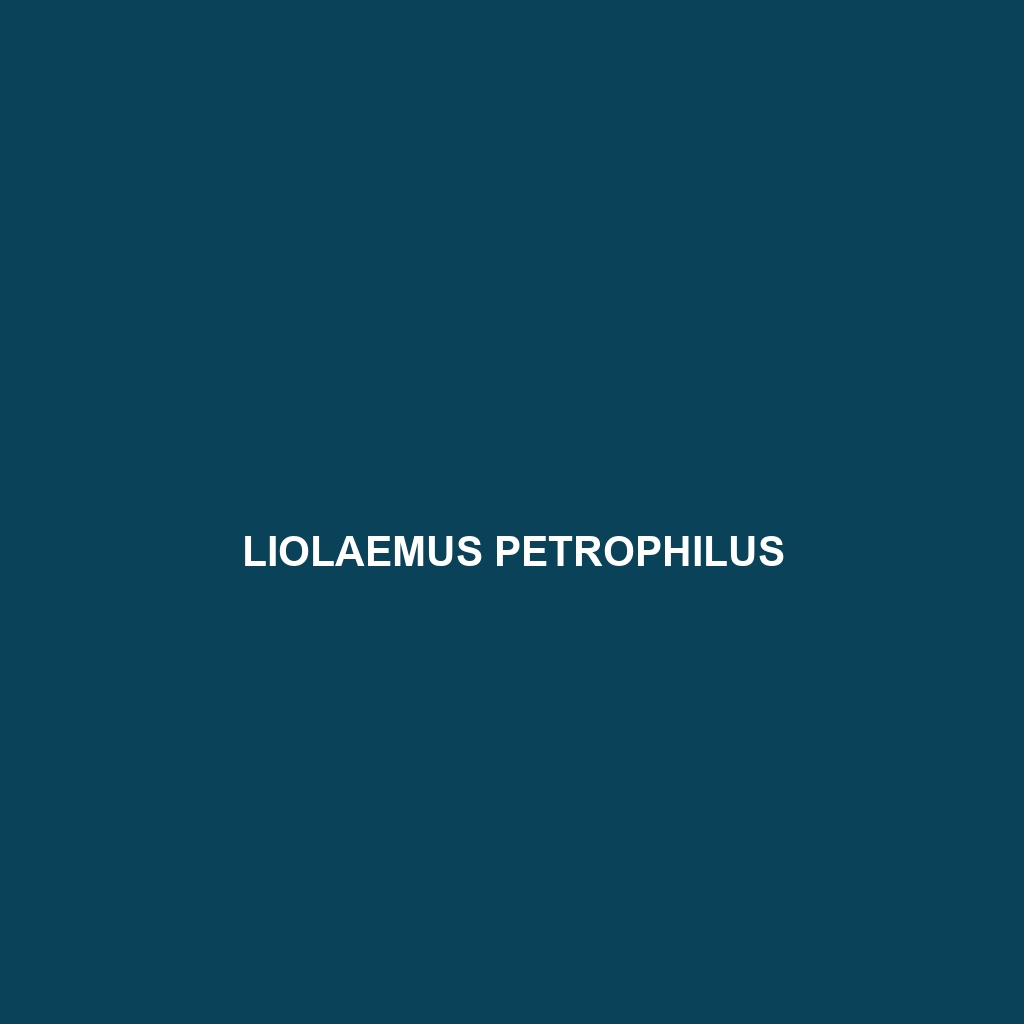Common Name
Liolaemus petrophilus
Scientific Name
Liolaemus petrophilus
Habitat
Liolaemus petrophilus is primarily found in the rocky terrains of the Andean regions of South America, specifically in parts of Argentina and Chile. This lizard thrives in semi-arid climates where rocky outcrops provide essential refuge and hunting grounds. Typical habitats include mountainous areas with sparse vegetation, avoiding dense rainforests and lush savannas, which are less favorable for their survival. These lizards are often spotted basking on sunlit rocks during the day and retreating to crevices or under stones to escape from potential predators. The physical landscape comprises dry, rocky surfaces intermixed with patches of low shrubs and grasses, creating a unique ecological niche that supports the populations of Liolaemus petrophilus.
Physical Characteristics
Liolaemus petrophilus exhibits distinct physical traits that set it apart from other lizard species. Adult individuals typically measure between 12 to 22 cm in length, making them moderately sized within the Liolaemus genus. The coloration varies, but it often features earthy browns, greens, and occasionally gray tones, which provide effective camouflage against rocky backgrounds. Notable physical features include elongated bodies, well-defined claws for climbing, and a flat head which aids in navigating through rocky terrains. The scales are often smooth but can display slight granulation, enhancing their ability to blend into their environment. This striking coloration and structure are not only adaptations for survival but also serve critical roles in thermoregulation and predator avoidance.
Behavior
Behaviorally, Liolaemus petrophilus is diurnal, meaning it is most active during daylight hours. These lizards are known for their territorial nature, often seen basking on rocks to regulate their body temperature and assert dominance over their territory. During mating seasons, males engage in elaborate displays, which include head-bobbing and push-ups to attract females and deter rival males. They exhibit solitary behavior outside of breeding seasons, with minimal social interaction. Feeding occurs primarily in the early morning and late afternoon, taking advantage of cooler times of the day. Their keen eyesight allows them to spot prey and potential threats from a distance, enhancing their survival strategies. Notably, Liolaemus petrophilus has been observed to exhibit unique basking behaviors, favoring specific rock formations that maximize sun exposure.
Diet
The dietary habits of Liolaemus petrophilus classify it as an insectivore, primarily feeding on a variety of small invertebrates, including insects, worms, and arachnids. Their diet is supplemented by occasional plant matter, qualifying them as opportunistic feeders. They exhibit hunting strategies that involve patiently waiting and quickly darting out to catch prey, showcasing their agility and keen reflexes. These lizards are critical in controlling insect populations within their habitats, thus playing a vital role in maintaining ecological balance. Their feeding patterns tend to be influenced by seasonal availability of prey, with peaks in activity correlating with warmer months when insects are more plentiful.
Reproduction
The reproductive cycle of Liolaemus petrophilus generally occurs in the warmer months, around late spring to early summer. During this time, males use visual and olfactory signals to attract females, often resulting in competitive displays among males. After successful mating, females undergo a gestation period ranging from 4 to 6 weeks before giving birth to live young, a characteristic of many species in the Liolaemus genus. Clutch sizes can vary but typically range between 3 to 10 offspring, depending on the female’s health and environmental conditions. Parental care is minimal, with young lizards receiving no postnatal care, relying instead on their instincts and camouflaging abilities to survive in the wild.
Conservation Status
The conservation status of Liolaemus petrophilus is currently classified as “Least Concern” according to the International Union for Conservation of Nature (IUCN), indicating that this species does not face immediate threats of extinction. However, habitat loss due to human activities such as urban development and agriculture poses potential risks to their populations. Conservation efforts focus on habitat preservation and monitoring population trends to ensure this reptile continues to thrive in its natural environment. Ongoing research on the species may inform future conservation strategies to counteract any emerging threats related to climate change and habitat degradation.
Interesting Facts
One interesting fact about Liolaemus petrophilus is its remarkable adaptability to rocky environments, showcasing unique physiological traits such as an ability to alter coloration in response to environmental changes, assisting in camouflage. Moreover, these lizards have developed an impressive resistance to fluctuations in temperature, allowing them to maintain optimal body heat during extreme weather conditions. Another fascinating aspect is their complex social behavior during the mating season, where males not only compete physically but also engage in visual displays that highlight their health and vigor.
Role in Ecosystem
Liolaemus petrophilus plays a crucial role in its ecosystem as both a predator and prey. Through its diet, this lizard helps control insect populations, thereby contributing to the ecological balance of its habitat. Additionally, as a food source for several bird species and larger reptiles, it is a vital component of the food web. The presence of Liolaemus petrophilus indicates a healthy ecosystem, as these lizards require specific environmental conditions for survival. Their activities, including burrowing and foraging, also aid in soil aeration and nutrient cycling, reinforcing their importance in maintaining the overall health of their habitat.

